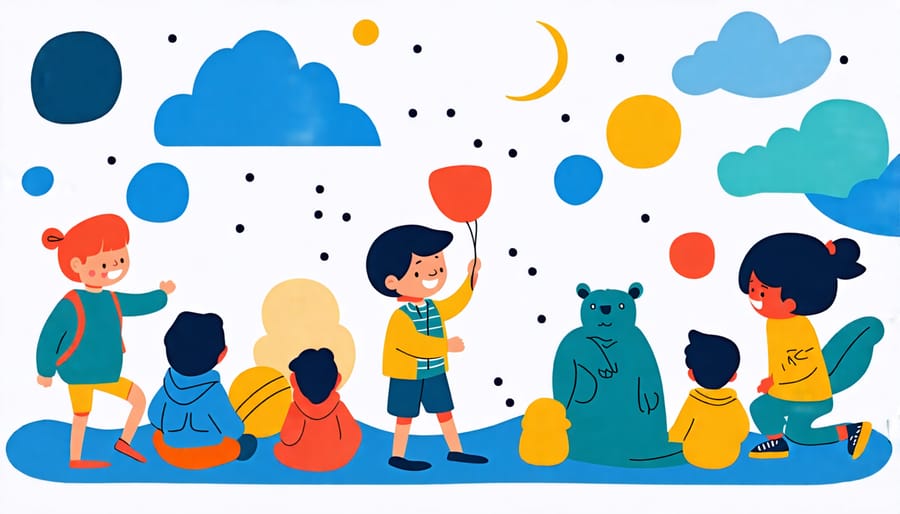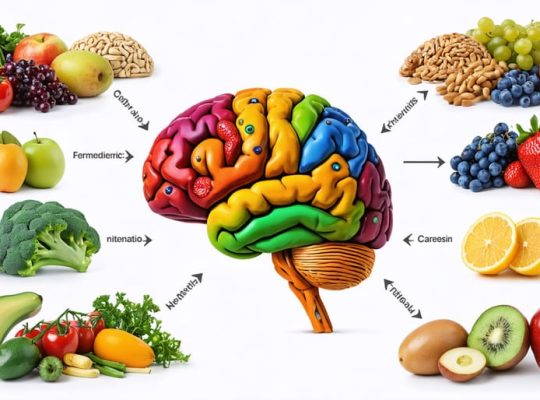Engage children in ‘z activity’ by incorporating these expert-approved methods into their daily routines. First, integrate z activities during family outings or playtime to encourage natural interaction and boost communication skills. Recognize and praise children’s efforts during these sessions to build confidence and self-esteem. Furthermore, collaborate with schools to include structured z activities in the curriculum, fostering a supportive environment for mental and emotional growth. Finally, consult with child psychologists to tailor z activities to specific needs, ensuring that every child benefits from personalized approaches. These steps not only enhance children’s mental health but also empower parents, teachers, and healthcare professionals with effective strategies for holistic development.
Understanding ‘Z Activity’
What Is ‘Z Activity’?
‘Z activity’ is an innovative approach to enhancing children’s mental health by focusing on relaxation, creativity, and self-expression. Designed to be engaging and fun, it incorporates a blend of physical play, mindful breathing, and creative tasks like drawing or storytelling. These activities are tailor-made to nurture a child’s emotional well-being, offering them a healthy outlet to process feelings and reduce stress. What’s unique about ‘Z activity’ is its emphasis on inclusivity and adaptability, making it suitable for children of all ages and backgrounds. By participating in ‘Z activity’, kids not only experience joy and relaxation but also build resilience and emotional intelligence. This supportive framework encourages children to explore their imaginations, fostering a sense of accomplishment and confidence in their abilities.

Origins and Development
In the early 2000s, ‘z activity’ was crafted by child psychologists eager to find engaging ways to support children’s mental health. Recognizing that traditional therapies sometimes overwhelm young minds, experts developed this approach, focusing on play and exploration as essential elements of therapy. At its core, ‘z activity’ integrates foundational theories, such as cognitive-behavioral therapy and play therapy, tailoring them specifically for children. By blending these techniques, it offers a compassionate and interactive way for children to express their thoughts and feelings. Driven by the belief that every child deserves a safe space to explore emotions, ‘z activity’ has been embraced by parents, teachers, and healthcare professionals. It has gradually grown, guided by ongoing research and success stories from families who have witnessed its positive impact on their children’s well-being.

How ‘Z Activity’ Improves Child Mental Health
Boosting Emotional Resilience
Emotional resilience is a crucial skill for children to develop, enabling them to navigate life’s ups and downs with confidence and grace. ‘Z activity’ plays a significant role in boosting this resilience by offering children a safe and nurturing space to process their emotions. Through engaging in ‘z activity,’ children learn to identify and express their feelings, which is essential for emotional intelligence.
Parents have shared heartwarming stories of their children becoming more adept at handling disappointments and setbacks after participating in ‘z activity.’ For instance, one parent observed that her child became less frustrated with challenges at school, approaching them with a newfound sense of calm and problem-solving skills.
Experts also emphasize the importance of activities like ‘z activity’ in cultivating emotional resilience. Dr. Emily Rivera, a renowned child psychologist, notes that interactive and expressive activities can foster a sense of mastery and self-worth in children, which is key to their emotional well-being.
By incorporating ‘z activity’ into their routines, children not only have fun but also acquire the emotional tools necessary to thrive in a complex world. This practice encourages empathy, self-awareness, and adaptability, fundamental traits for building emotional strength and resilience.
Enhancing Social Skills
Engaging in ‘z activity’ offers children an excellent opportunity to enhance their social skills and build stronger relationships. Through interactive play and shared experiences, children learn essential skills like cooperation, communication, and empathy. As they participate in ‘z activity’, they often find themselves in scenarios where they need to collaborate and negotiate with peers. This fosters a sense of teamwork and understanding, which are crucial components of building friendships and navigating social environments.
Moreover, ‘z activity’ serves as a practical platform for children to express their emotions in a safe environment, contributing to their emotional resilience. This can be particularly beneficial for children who might struggle with expressing themselves verbally, providing them with alternative ways to convey their feelings and understand those of others. These interactions can lead to more fulfilling relationships, both in childhood and as they grow into adults. Personal stories from parents highlight how ‘z activity’ has transformed their children’s ability to make friends and maintain positive social connections, reinforcing the activity’s value in social development.
Incorporating ‘Z Activity’ in Daily Life

Simple Activities to Start With
Starting with simple ‘z activities’ can seamlessly integrate into daily routines, offering gentle ways to support children’s mental health. A great first step is encouraging mindful coloring. Use materials like coloring books or printable pages that are readily available, and let children express themselves through colors. Another enriching activity is nature walks. Encourage children to observe and discuss what they notice in the environment, which fosters mindfulness and appreciation for the outdoors.
Storytelling can be magical too. Whether reading aloud together or creating stories from imaginations, it enhances creativity and communication skills. Additionally, simple breathing exercises are effective in promoting relaxation and focus. Guide kids through short sessions of deep breathing to help them center their thoughts and alleviate stress.
Lastly, incorporate regular gratitude moments. Sharing things they’re thankful for each day can boost positivity and emotional awareness. These activities, woven into regular schedules, offer supportive and compassionate ways to nurture children’s emotional and mental well-being.
Overcoming Common Challenges
When introducing ‘z activity’ into children’s routines, parents, teachers, and healthcare professionals may face challenges. A common obstacle is initial resistance from the child, who may feel apprehensive about something new. To ease this, approach ‘z activity’ with enthusiasm and patience, gradually integrating it into daily life. For instance, start with short, engaging sessions and let the child take breaks as needed. Personalize the experience to align with the child’s interests, transforming apprehension into excitement.
Another challenge could be finding the right balance in busy schedules. Prioritizing time for ‘z activity’ can be made easier by weaving it into existing routines, like after-school relaxation or weekend family fun. Flexibility is key—adjust the activities to fit your schedule rather than adhering to a strict format.
Encouragement from peers or siblings can also help in overcoming hesitations. By fostering a supportive environment and sharing success stories, you empower the child to embrace ‘z activity’ as a rewarding and enjoyable part of their mental health journey.
Expert Opinions on ‘Z Activity’
In recent years, experts in psychology and child development have emphasized the importance of activities that promote emotional well-being in children. ‘Z activity’ has piqued interest as a promising approach, integrating elements of play with therapeutic mindfulness practices. Renowned child psychologist Dr. Emily Rodriguez highlights that children naturally gravitate towards activities that allow them to express feelings creatively and safely. She states that ‘z activity’ serves as a bridge between emotional expression and mindfulness, helping children articulate complex emotions without feeling overwhelmed.
Dr. Karen Smith, a developmental psychologist, points out that ‘z activity’ encourages a harmonious blend of cognitive and emotional skills. She explains that it allows children to navigate their feelings while fostering a sense of accomplishment. According to her studies, children who regularly engage in ‘z activity’ show improved emotional resilience and coping mechanisms in challenging situations.
Moreover, Dr. Luca Nash from the National Child Development Institute cautions against dismissing these activities as mere play. He argues that structured engagement in ‘z activity’ can significantly enhance a child’s adaptability to stress, ultimately promoting better mental health. His research aligns with a growing body of evidence suggesting that such activities can reduce anxiety and improve overall psychological stability in children.
Parent and teacher testimonials further underscore the value of ‘z activity’, noting observable improvements in children’s mood and classroom behavior. This holistic blend of expert insight and real-world application illustrates the profound impact ‘z activity’ can have on a child’s mental health, paving the way for more resilient and emotionally intelligent future generations.
Personal Stories: Success with ‘Z Activity’
When Laura introduced her son, Jake, to ‘Z Activity’, she was hopeful but cautious. Jake, a lively eight-year-old, had been struggling with anxiety, making it hard for him to navigate daily interactions. Within weeks of engaging with ‘Z Activity’, Laura noticed subtle changes. Jake began expressing his feelings more openly and was less apprehensive about social gatherings. Laura credits the structured routine and creative elements of ‘Z Activity’ with helping Jake find a sense of calm and confidence. Similarly, Rachel, a teacher, shared how ‘Z Activity’ transformed her classroom environment. Integrating this approach, she observed increased cooperation and emotional awareness among her students. Rachel recalls a particularly touching moment when a usually reserved student led a group activity, explaining their newfound interest in dance through ‘Z Activity’. In a healthcare setting, Dr. Singh reported constructive shifts in his young patients’ resilience and coping skills, attributing these to the therapeutic aspect of ‘Z Activity’. Dr. Singh emphasizes its versatility, accommodating diverse needs and backgrounds while fostering mental well-being. These stories highlight the profound impact ‘Z Activity’ can have, offering a beacon of hope for many families and professionals seeking meaningful ways to support children’s mental health.
Conclusion
In conclusion, understanding the positive impact of ‘z activity’ on children’s mental health is crucial for parents, teachers, and healthcare professionals seeking supportive strategies. By incorporating ‘z activity’, children can experience improved emotional well-being and resilience. Encouraging participation can foster creativity, reduce stress, and enhance emotional expression, much like creative art therapy. Both personal experiences and expert insights highlight the transformative power of engaging children in such activities. As we move forward, let us remain committed to nurturing young minds through these impactful practices, knowing they lay the foundation for lifelong mental health.







